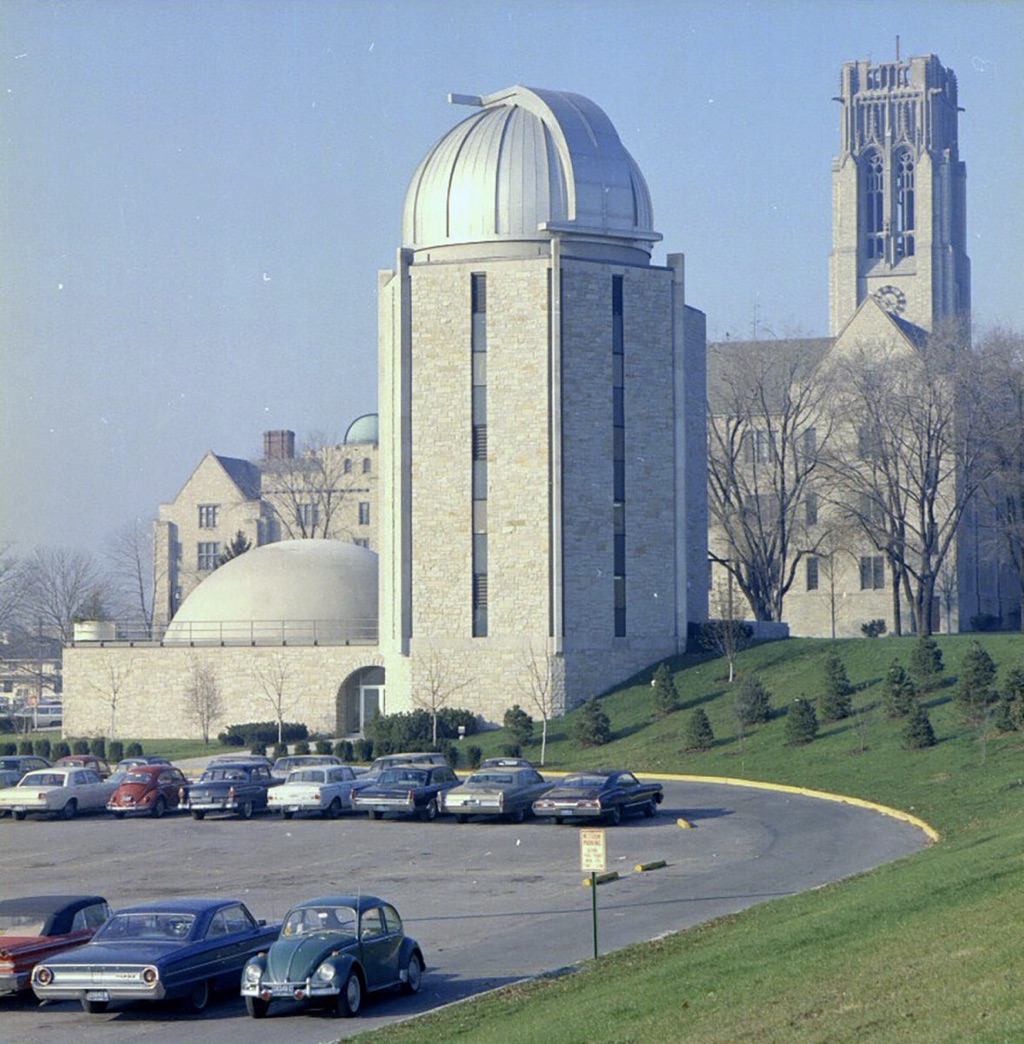The Department of Physics and Astronomy at the University of Toledo was founded in 1965, and the Ritter Astrophysical Research Center opened its doors in 1967. This six-story building houses a one-meter telescope on the top floor and the 100 seat full-dome digital Ritter Planetarium in the basement. The site was selected to sit prominently on Bancroft Street, just west of University Hall. The new center resulted from the vision and leadership of Dr. John Turin and a generous gift from Toledo attorney George Ritter, along with some state funding. From the beginning, Dr. Turin had a two-part mission for the Ritter Observatory and Planetarium, "to pursue knowledge and to serve the public", which he carried out by recruiting faculty from top universities (who would help create an international reputation for the University), and by educating the Toledo community about the universe through public programming. This dual mission of the Ritter Astrophysical Research Center remains today, more than 50 years later.
In the 1960s, Toledo glass manufacturer Owens-Illinois began experimenting with "Cer-Vit", a glass-ceramics product that does not distort when exposed to extreme temperatures, which turned out to be excellent for producing telescope mirrors. Owens-Illinois donated the first Cer-Vit telescope mirror it produced to UToledo, creating the one-meter Ritter Observatory. The 41-inch mirror was ground and polished to an accuracy better than two millionth of an inch, and the telescope was mounted in the new observatory 60 feet above the ground floor.
The Ritter Planetarium was envisioned as the public outreach wing of the new Department of Physics and Astronomy. Its first director, Helen Brooks, joined UToledo's faculty in 1953, as a professor of mathematics, and had a life-long interest in astronomy. The physical structure for the planetarium included a forty-foot dome and a Spitz A3P Prime Sky projector designed to produce extremely accurate representations of the skies. As director, Brooks wrote and produced the planetarium shows. The first show opened on December 3, 1967, and five shows were offered per week to the public. Over 7,200 people attended the first 100 shows of the inaugural season. In two years, the total number of attendees was 22,000.
The growth of the Department of Physics and Astronomy paralleled the growth of the University of Toledo. Just three months before the new building opened, UToledo took the major step of joining the state of Ohio's higher education system—the most important development in the institution's history since its founding in 1872. State status produced a building boom that matched the increase in student enrollment. With the approval of the Ph.D. program in physics and astronomy in 1965, Dr. Turin began to recruit top scholars from around the world who were enticed by the opportunity to build a program from the ground up in a brand new state-of-the-art building. Dr. Adolf Witt, fresh from receiving his Ph.D. at the University of Chicago was hired to build the fledgling astronomy teaching and research effort. Dr. Witt, an internationally renowned expert in dust astrophysics, set the foundation for the teaching, research and outreach success of the astrophysics group that we enjoy today.



